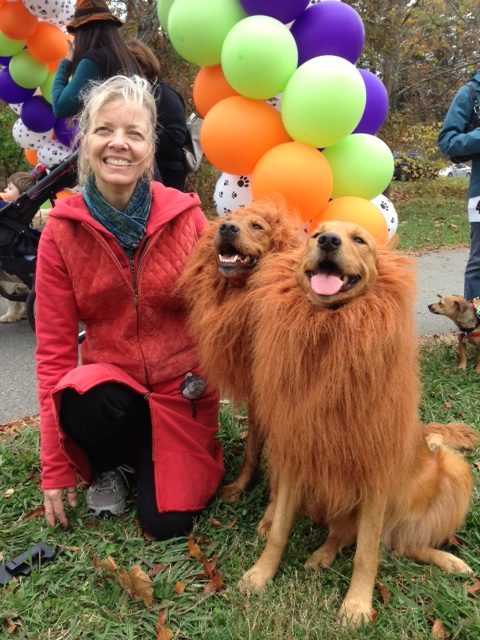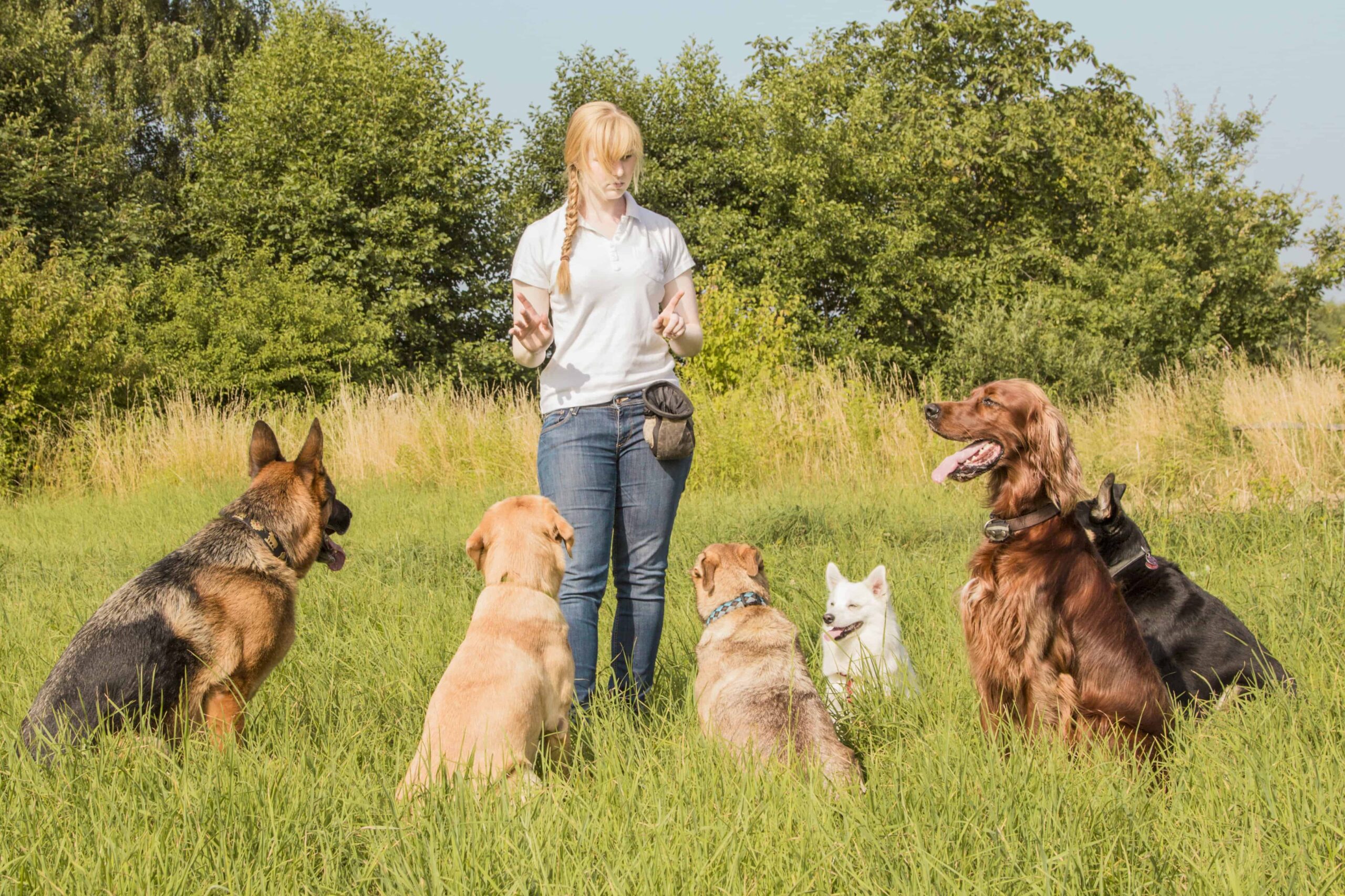Comprehending Dog Body Language During Dog Training
Comprehending Dog Body Language During Dog Training
Blog Article
Necessary Tips for Effective Dog Training: An Overview for Pet Owners
Effective pet dog training is a multifaceted procedure that needs a strategic approach customized to both the family pet's temperament and the owner's goals. Recognizing exactly how to navigate these barriers can substantially boost the training experience, eventually transforming the relationship between owner and pet dog.
Understanding Canine Behavior
Recognizing canine actions is important for reliable training and fostering a harmonious relationship between pooches and their proprietors. Pet dogs interact mostly with body movement, articulations, and actions, making it essential for proprietors to translate these signals precisely. Recognizing a canine's stance, tail placement, and ear positioning can give understandings right into its psychological state. For instance, a wagging tail does not constantly indicate joy; it can likewise signify enjoyment or stress and anxiety.

Socialization plays a significant duty in canine actions; direct exposure to different environments, people, and other animals can substantially influence a pet dog's character. Moreover, elements such as breed qualities and individual temperament should assist training approaches, as some types may have specific behavioral qualities that demand tailored methods. By recognizing these aspects, owners can produce a supportive environment that motivates positive actions, resulting in successful training results and a deeper bond with their pet dogs.
Establishing Regular Commands
Efficient interaction with your canine starts with developing consistent commands. This fundamental component of training is crucial for cultivating understanding between you and your pet dog. Consistency in the commands you make use of ensures that your pet can reliably associate particular words or expressions with the desired behaviors.
When picking commands, select clear, distinct words that are easy to state and separate from each other. Prevent utilizing similar-sounding commands that may confuse your pet dog. Utilizing "rest" and "stay" is suitable, but "sit" and "struck" could lead to misunderstandings.
In addition, maintain the exact same tone and quantity for each and every command. Canines are sensitive to singing hints, so varying your tone can produce confusion.
It is similarly vital to ensure that all family participants get on the same web page concerning the commands made use of. A united front in command usage will certainly avoid combined signals and enhance the understanding procedure.
Positive Support Techniques
The power of favorable support in pet dog training hinges on its ability to urge wanted habits via benefits and praise. This method is grounded in the concept that behaviors followed by desirable end results are most likely to be duplicated. By integrating positive support into your training program, you can effectively shape your dog's habits in a constructive way.
To implement positive support, it's necessary to recognize what motivates your canine, whether it be treats, playthings, or verbal appreciation. When your canine does a preferred action, such as remaining on command, right away compensate them with a reward or click to investigate love. This association in between the command and the positive end result enhances their understanding.
It's vital to timing the benefits correctly; providing the support within seconds of the preferred actions helps your canine make the link (dog training). Additionally, consistency is essential-- guarantee that all relative use the very same commands and reward systems to stay clear of confusion

Slowly, you can reduce the frequency of treats as your pet learns the actions, transitioning to praise or intermittent rewards. This technique not only fosters a solid bond in between you and your pet but also advertises a positive understanding environment, making training a satisfying experience for both.
Socialization and Communication
Constantly revealing your pet dog to a selection of environments, individuals, and other animals is essential for their social growth. Socializing must start early, ideally throughout the important home window of 3 to 14 weeks, when young puppies are most receptive to brand-new experiences. Nonetheless, older pets can also gain from ongoing socialization initiatives.
Introduce your dog to different settings, such as parks, pet-friendly stores, and urban areas. This direct exposure aids them adjust to various stimuli, reducing stress and anxiety and anxiety actions. Encourage favorable communications with various other pets and individuals, guaranteeing that these encounters are controlled and safe to foster confidence.
Utilize organized playdates with genteel pet dogs, as this can boost your pet's social abilities and show them suitable behavior. Obedience classes and training sessions likewise offer excellent possibilities for socializing, permitting your pet dog to connect with others in a supervised environment.
Display your dog's body movement during communications, as this will aid you assess their convenience degree. Slowly increase direct exposure to more challenging circumstances while making sure that each experience is positive. A well-socialized dog is more probable to exhibit balanced behavior, making them a delight to have in any type of setup.
Attending To Typical Training Challenges
Every dog additional reading owner will certainly encounter training challenges eventually, despite their canine's age or socialization degree. Identifying common problems such as stubbornness, interruptions, and fearfulness can help in establishing reliable techniques for improvement.

Gradually present interruptions as the pet comes to be a lot more competent in commands. Short, constant training sessions are likewise reliable in keeping focus.
Fearfulness can prevent a pet's learning process. Steady desensitization to the source of worry, coupled with favorable support, can help reduce stress and anxiety. Persistence is vital; never ever compel a pet dog into a circumstance that causes distress, as this may intensify the concern.
Eventually, understanding and attending to these common challenges with a structured strategy will certainly promote a more effective training experience, enhancing the bond between canine and proprietor while promoting efficient knowing.
Verdict
In recap, effective dog training counts on a thorough understanding of canine habits, the establishment of regular commands, and the application of favorable reinforcement techniques. Socializing plays an essential duty in developing well-adjusted animals, while resolving typical training obstacles needs persistence and versatility. By carrying out these important methods, visit this web-site pet owners can foster a strong bond with their dogs and promote preferable actions, inevitably leading to a harmonious connection in between humans and their canine friends.
Comprehending pet habits is important for efficient training and fostering a harmonious partnership in between pooches and their proprietors.Socializing plays a significant role in pet dog behavior; direct exposure to different environments, people, and various other animals can considerably impact a canine's character.The power of positive support in dog training lies in its capacity to urge wanted behaviors with benefits and appreciation. By including positive reinforcement into your training program, you can properly shape your canine's actions in a useful fashion.
In recap, effective canine training relies on a comprehensive understanding of canine habits, the establishment of constant commands, and the application of positive support strategies.
Report this page